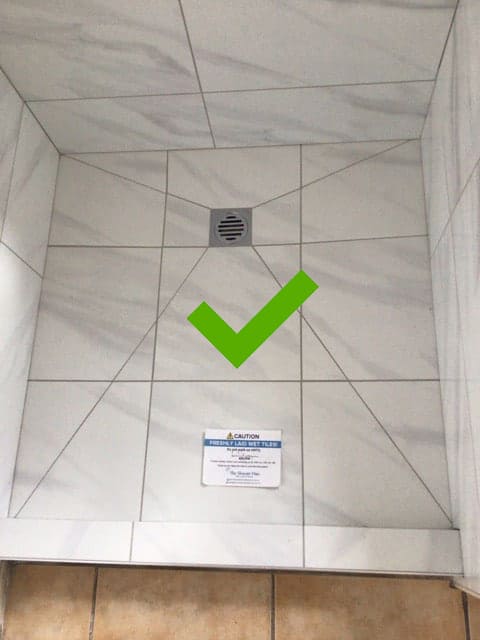Every person may have their private thinking involving How to Repair and Prevent Bathroom Water Damage.

The bathroom is very at risk for wet accumulation as well as possible water damages due to the regular use water in it. This article uses straightforward inspection techniques to assist identifying water damages threats.
The frequent use of water in the shower room makes it exceptionally vulnerable for moist build-up and also possible water damage. By examining it on a regular basis, you can lower water related damages.
The complying with collection of examinations is very easy to perform and ought to be done when in every 3 months in order to maintain your washroom in good shape and to prevent potential water damages caused by the bathtub, the shower, pipe joints and plumbing, sinks, cabinets, and the commode
Do not forget executing these examinations and also be detailed while executing them. Remember that these simple inspections can conserve you a great deal of cash by supplying early indications for water damage
Sinks and also Cabinets
Sinks and also closets are subjected to wetness and humidity everyday and are frequently ignored. Examine consistently under the sink as well as on the countertop over it. Repair any kind of drip in the trap as it might suggest drainpipe troubles. Browse the sink, slow draining pipes might suggest a blocked drainpipe. Change sink seals if they are broken or loose.
Bath tub as well as Shower
The shower and bathtub call for unique attention and also upkeep. Check the tiles and also replace if cracked. Make certain that there is no missing grout in between the ceramic tiles. Inspect and also replace fractured caulking at joints where the wall surfaces meet the flooring or the tub. Clogged drains pipes and pipelines issues will stop the bathtub from drying out as well as may suggest significant problems under the bathtub. Talk to a professional promptly to prevent architectural damages. Take note of stainings or soft areas around the tub wall surfaces as they may suggest an internal leak.
Plumbing
Signs for water damages are hard to discover since many pipelines are installed inside the walls.
Pay unique attention to flooring and also walls moisture as well as discolorations as they may suggest an unseen plumbing trouble. Inspect dampness levels in adjoining areas as well.
The Toilet
The toilet is a prone water junction. Inspect the water lines and look for leaks around the bathroom seat, in the hose, as well as under the water container. If you discover any kind of indications of dampness on the floor around the commode, check for leakages in the toilet edge as well as container seals.
Understand that hanging commode bowl antiperspirants raises the possibilities for obstructions.
Water Damage Signs In The Bathroom To Avoid Cleanup
Musty smell
This is one of the easiest signs to catch because musty smells are so odorous. The damp, earthy, moldy smell should be a big red flag. The smell will develop when moisture gets trapped in surfaces, and begins to facilitate mold growth. Leaking pipes under cabinets, inside walls, and behind shower fixtures will cause moisture to stay trapped and not dry, which will lead to mold growth and spread. As soon as you notice any musty smells in your bathroom, have it checked for hidden water damage and cleanup signs.
Visible mold
If the smell isn’t there to give it away, sometimes you will actually see mold growth. Finding mold in your bathroom is a serious problem, because mold is very harmful to your health. By the time mold growth is visible, it also means that water damage has already occurred and been present for some time. The only way the mold problem can be resolved is to find the source of the moisture and get it stopped. To safely and adequately remove mold, you need to have professionals handle the remediation. Do not waste any time in getting mold problems addressed, fixed, and sanitized so that you can protect you and your family from the many respiratory symptoms caused by mold exposure.
Damaged floors
Bathroom floors should be able to withstand some exposure to water while still remaining in good condition. However, when excess exposure or water leaks occur, they will begin to damage even the most water-resistant flooring. If you notice any cracking, bubbling, staining, or warping on your bathroom floors, there is probably a water leak somewhere causing the distortion. If you notice areas of the floor have become softer, or even have a spongy feeling, there is probably damage to the subfloor. Subflooring is typically made up of plywood. When plywood is exposed to water or moisture, it will absorb it. Once it has become saturated, the weight of the excess water will cause the wood to swell and soften. Check the floors in your bathroom frequently to catch any of these sings before they lead to damaged subflooring.
Changes on walls
When water leaks behind walls, it will cause changes in the drywall. Peeling plaster, blistering paint, and soggy wallpaper are all good indicators that excess water is building up behind the wall. Water leaking behind drywall will cause it to swell and be soft to the tough. If you start to notice gaps along the trim of your walls, or where tile meets the wall, it could also be a strong indicator that there is a leak behind the wall. Any changes, distortion, or damage on the walls should be evaluated as soon as you notice it to prevent further water damage and cleanup.

We had been made aware of that write-up on Looking for Signs of Water Damage in the Bathroom from a good friend on another web address. Don't hesitate to set aside a second to share this blog posting if you appreciated it. I value reading our article about How to Repair and Prevent Bathroom Water Damage.
Booking Page